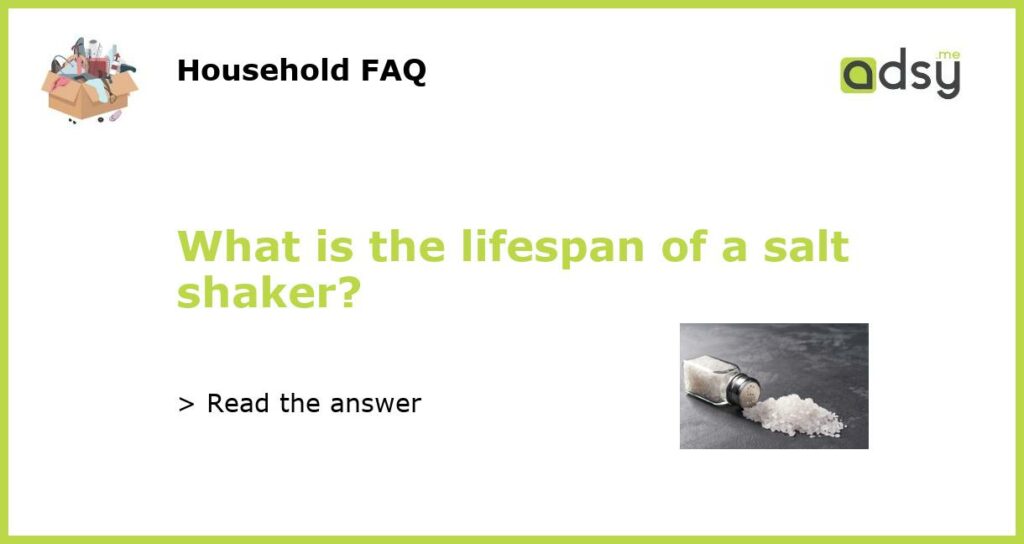Salt shakers are a common kitchen tool used to dispense salt when cooking or seasoning food. However, like any household item, salt shakers have a limited lifespan. Factors such as the material, usage, and maintenance can all affect how long a salt shaker will last. In this article, we will explore the typical lifespan of a salt shaker and the factors that can impact its durability.
What Are Salt Shakers Made Of?
Salt shakers are commonly made from materials such as glass, ceramic, stainless steel, or plastic. Each material has its own durability and can affect the lifespan of the salt shaker. For example, glass and ceramic salt shakers are considered more durable and can last for many years if handled carefully. On the other hand, plastic salt shakers are more susceptible to wear and tear and may need to be replaced more frequently.
Usage and Maintenance of Salt Shakers
The lifespan of a salt shaker also depends on how frequently it is used and how well it is maintained. If a salt shaker is used daily and constantly exposed to moisture or humidity, it may wear out quicker. Similarly, if a salt shaker is not properly cleaned or maintained, it can become clogged or damaged over time.
To prolong the lifespan of a salt shaker, it is important to handle it with care and avoid unnecessary rough handling. Additionally, regular cleaning and proper maintenance can help prevent clogs and extend the life of the salt shaker.
Environmental Factors
Environmental factors, such as exposure to sunlight or extreme temperatures, can also impact the durability of a salt shaker. For example, if a salt shaker is constantly exposed to direct sunlight, it may fade or become brittle over time. Similarly, if a salt shaker is exposed to extreme temperatures, such as being left outside in freezing temperatures, it may crack or shatter.
To protect the salt shaker from environmental damage, it is important to store it in a cool, dry place away from direct sunlight. Additionally, if using a salt shaker outdoors, it is recommended to bring it indoors after use to prevent exposure to extreme temperatures.
Replacement and Upgrading
Despite proper care and maintenance, there may come a time when a salt shaker needs to be replaced. If a salt shaker becomes worn out, cracked, or damaged beyond repair, it is best to replace it with a new one. Alternatively, some people may choose to upgrade their salt shaker to a more durable or aesthetically pleasing option.
When replacing or upgrading a salt shaker, consider the material, size, and design that best suits your needs. There are many options available, ranging from basic salt shakers to more elaborate designs that can add a touch of style to your kitchen.
Conclusion
The lifespan of a salt shaker can vary depending on factors such as the material, usage, maintenance, and environmental conditions. Glass and ceramic salt shakers tend to be more durable and can last for many years with proper care. Plastic salt shakers, on the other hand, may need to be replaced more frequently.
To extend the lifespan of a salt shaker, handle it with care, clean it regularly, and store it in a cool, dry place. Additionally, avoid exposing the salt shaker to direct sunlight or extreme temperatures. If a salt shaker becomes worn out or damaged, it is best to replace it with a new one or consider upgrading to a more durable option.
Overall, by taking the necessary steps to care for your salt shaker, you can ensure that it lasts for as long as possible, making it a reliable tool in your kitchen for years to come.






